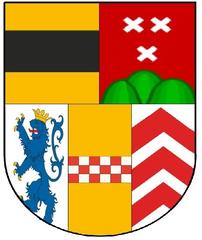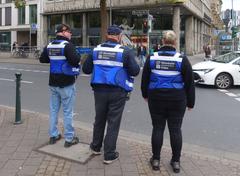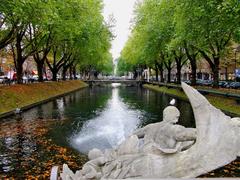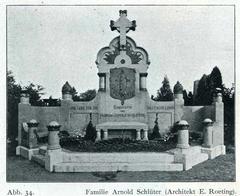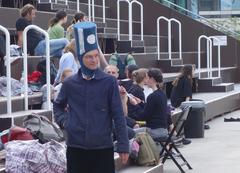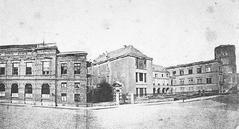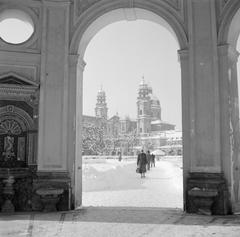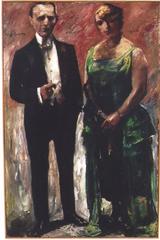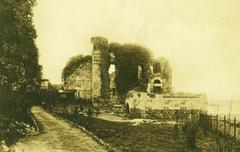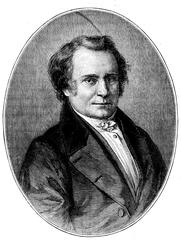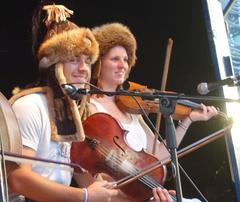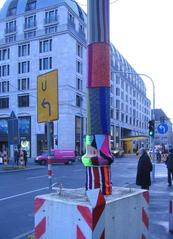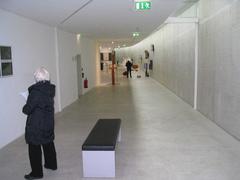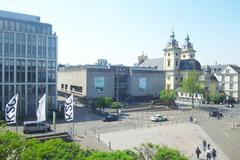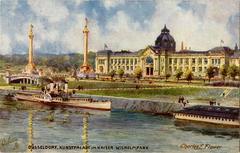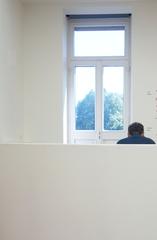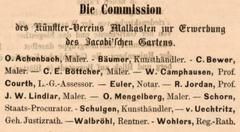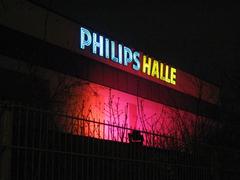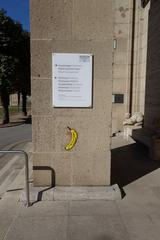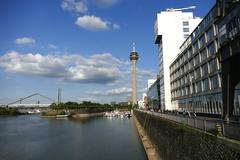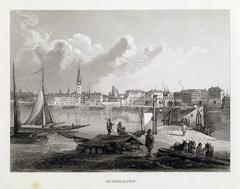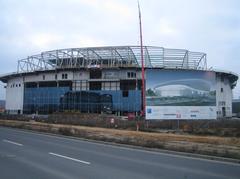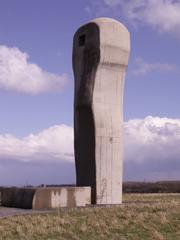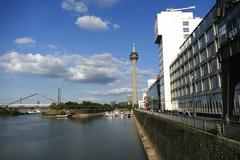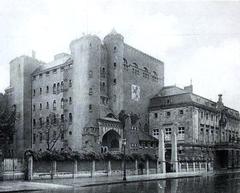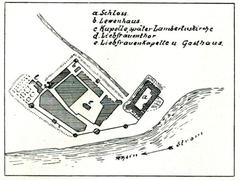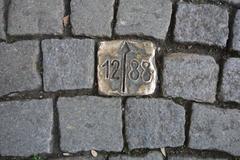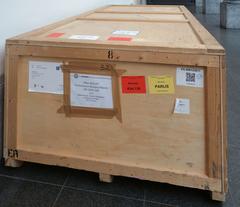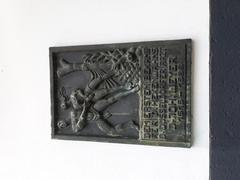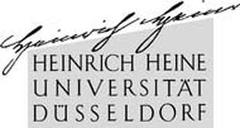
Stift Gerresheim: Visitor Guide, History, and Essential Information
Date: 04/07/2025
Introduction
Stift Gerresheim, with its focal point the Basilica of St. Margareta, stands as one of Düsseldorf’s most significant historical and cultural landmarks. Nestled in the heart of the Gerresheim district, this ancient site offers visitors a rich tapestry of over 1,100 years of religious, architectural, and social history. Renowned for its exceptionally preserved Romanesque and Ottonian features—alongside later Gothic and Baroque enhancements—the basilica not only testifies to the region’s medieval past but also remains a vibrant center of community life today.
This guide provides a detailed overview of Stift Gerresheim’s historical evolution, highlights its architectural and artistic treasures, and offers practical visitor information, including up-to-date opening hours, ticketing, accessibility, guided tours, and travel tips. Whether you are a history enthusiast, architecture lover, or cultural traveler, Stift Gerresheim promises an enriching and memorable experience.
(catholicshrinebasilica.com; visitduesseldorf.de; st-margareta.de)
Historical Overview
Early Foundations (9th–13th Century)
Stift Gerresheim traces its origins to around 870 CE, founded as a women’s collegiate foundation (Kanonissenstift) by the Frankish nobleman Gerricus. Confirmed at the Synod of Cologne, Gerricus’ daughter Regenbierg became its first abbess. Despite devastation by Hungarian raiders in 919, the foundation endured, fostering the spiritual and social development of the region (wig-gerresheim.net).
Over time, the Stift accrued significant privileges—such as the right to collect tolls, confirmed by Emperor Heinrich II in 1019 and reaffirmed in 1292. The basilica, consecrated in 1236, stands as a remarkable example of late Romanesque architecture with Gothic influences. The adjacent parish church was consecrated in 1142, and Gerresheim’s status as a “Freiheit” (a privileged settlement) was established in 1368, later becoming a formal city around 1390 (en.wikipedia.org).
Reformation, War, and Decline (16th–18th Century)
The 16th and 17th centuries brought religious and social turmoil, notably during the Cologne War and the Thirty Years’ War. Gerresheim was repeatedly plundered and suffered from fires and epidemics, resulting in the decline of the Stift’s aristocratic character. Despite these hardships, the community endured, and the construction of the Blutskapelle (Blood Chapel) in 1725 and the continuation of local traditions highlighted Gerresheim’s resilience (wig-gerresheim.net).
Modernization and Integration (19th–21st Century)
Secularization under Napoleonic rule led to the dissolution of the Stift in 1806. The arrival of the railway in 1838 and the establishment of the Gerresheimer Glashütte in 1864 spurred industrial growth. In 1909, Gerresheim was incorporated into Düsseldorf, further developing its urban infrastructure. Despite the closure of traditional industries in the late 20th century, the district’s historic core remains a vibrant cultural hub (en.wikipedia.org).
Architectural and Artistic Highlights
Basilica of St. Margareta
The basilica is a masterpiece of Romanesque architecture, featuring a robust west façade, thick stone walls, rounded arches, and a distinctive two-story octagonal tower. Inside, visitors find harmonious proportions, high-set windows, and significant liturgical treasures—including the Ottonian crucifix (pre-1000 CE), late Romanesque altar table, reliquaries, and the high Gothic Gerricus sarcophagus (catholicshrinebasilica.com; de.wikipedia.org).
The former collegiate buildings, 13th-century cloister remnants, and surrounding 19th-century houses on Gerricusplatz complete the historical ensemble (kuladig.de).
Restoration and Preservation
The basilica has undergone several major restorations, notably in the late 19th and late 20th centuries. In 1982, Pope John Paul II granted it the title of a minor basilica. Ongoing preservation ensures that both the building and its treasures remain accessible for future generations (catholicshrinebasilica.com).
Cultural Significance and Living Heritage
Stift Gerresheim has long played a central role in community life. It hosts annual religious processions—most notably the “blood procession” venerating a relic associated with Christ’s blood—and serves as a venue for concerts, markets, and festivals throughout the year. The Heimatbrunnen (“Homeland Fountain”) on Gerricusplatz, with its 15 sculpted historical scenes, embodies the district’s collective memory (visitduesseldorf.de).
Italian guest workers since the 1950s have enriched local culture, and the district’s multicultural identity is reflected in its vibrant culinary and social scene (komoot.com).
Visitor Information
Opening Hours and Admission
- Regular Hours: Tuesday–Sunday, 10:00 AM–5:00 PM. Closed Mondays.
- Admission: Free; donations appreciated.
- Guided Tours: Weekends at 11:00 AM and 3:00 PM. Private group tours by appointment.
- Special Note (Renovation): From January 12, 2025, the basilica will close for at least 15 months for renovation. Services and events will be held at nearby parish churches (st-margareta.de).
Accessibility
- Main entrance has steps; assistance is available for mobility-impaired visitors. The surrounding district is mostly flat but includes cobblestone streets.
- Accessible restrooms are available in nearby cafés and restaurants.
Getting There
- Public Transport: S-Bahn (S8, S28), tram (703, 709). Nearest stop: “Düsseldorf Gerresheim.”
- By Car: Limited parking near Gerricusplatz.
- Bicycle/Walking: Dedicated cycling paths and pedestrian-friendly routes.
Nearby Attractions and Amenities
- Quadenhof Moated Castle: 15th-century castle, a short walk from the basilica.
- Gustav Adolf Church: Notable Protestant church (1878).
- Historic Old Town: Half-timbered houses, Gerricusplatz, Heimatbrunnen.
- Parks and Green Spaces: Gerresheimer Waldfriedhof and local public parks.
- Cafés and Restaurants: Numerous options with outdoor seating around Gerricusplatz.
Events and Festivals
- Religious Events: Easter, Christmas, and feast days feature special services and processions.
- Cultural Events: Markets, concerts, and seasonal festivals enliven the district year-round.
- Community Gatherings: Art exhibitions, workshops, and other social events.
Tips for Visiting
- Plan Ahead: Check for the latest visiting hours and renovation updates.
- Dress Code: Modest attire recommended inside the basilica.
- Photography: Non-flash photography is allowed except during services.
- Best Times: Weekday mornings in spring or early autumn are quieter.
- Guided Tours: Book in advance, especially for English-language tours.
- Accessibility: Contact the parish office to arrange assistance if needed.
Frequently Asked Questions (FAQ)
Q: Are entrance tickets required?
A: No, entry is free; donations are welcomed.
Q: What are the visiting hours?
A: Tuesday–Sunday, 10:00 AM–5:00 PM (subject to change; check official site).
Q: Is Stift Gerresheim accessible for visitors with disabilities?
A: The main nave is wheelchair accessible; some historic areas have limited access.
Q: Will the basilica be open during the 2025–2026 renovation?
A: No, the basilica will be closed from January 2025 for at least 15 months. Services continue at other parish venues.
Q: Are guided tours available in English?
A: Some tours and materials are offered in English; inquire and book in advance.
Q: How can I get to Stift Gerresheim by public transport?
A: S-Bahn lines S8/S28 or tram lines 703/709 to Gerresheim station, then a short walk.
Contact and Further Information
- Parish Office: +49 211 28 93 30 or [email protected]
- Website: www.st-margareta.de
- Tourism Info: visitduesseldorf.de
For virtual tours, events calendar, and more, visit the official parish and tourism websites.
Summary
Stift Gerresheim, centered on the Basilica of St. Margareta, is a living testament to Düsseldorf’s layered history and vibrant community spirit. From its origins as a noblewomen’s foundation to its current role as a cultural and spiritual hub, the site captivates visitors with its architecture, traditions, and welcoming atmosphere. While renovation will temporarily close the basilica from January 2025, the district’s historic charm and active community life ensure that Gerresheim remains a rewarding destination. Plan your visit, check for the latest updates, and enhance your experience with guided tours and the Audiala app for immersive audio guides.
Sources and Further Reading
- Basilica of St. Margareta, 2023, Catholic Shrine Basilica (catholicshrinebasilica.com)
- A Visit to Gerresheim, 2023, Visit Düsseldorf (visitduesseldorf.de)
- Stift Gerresheim History and Tourism, 2023, WIG Gerresheim (wig-gerresheim.net)
- St. Margareta Official Website, 2025, St. Margareta Parish (st-margareta.de)
- Gerresheim (District), 2023, Wikipedia (de.wikipedia.org)
- Kuladig Heritage Database, 2013, Kuladig (kuladig.de)
- Industriepfad Düsseldorf-Gerresheim, 2023, Industriepfad (industriepfad-gerresheim.de)
- komoot.com


